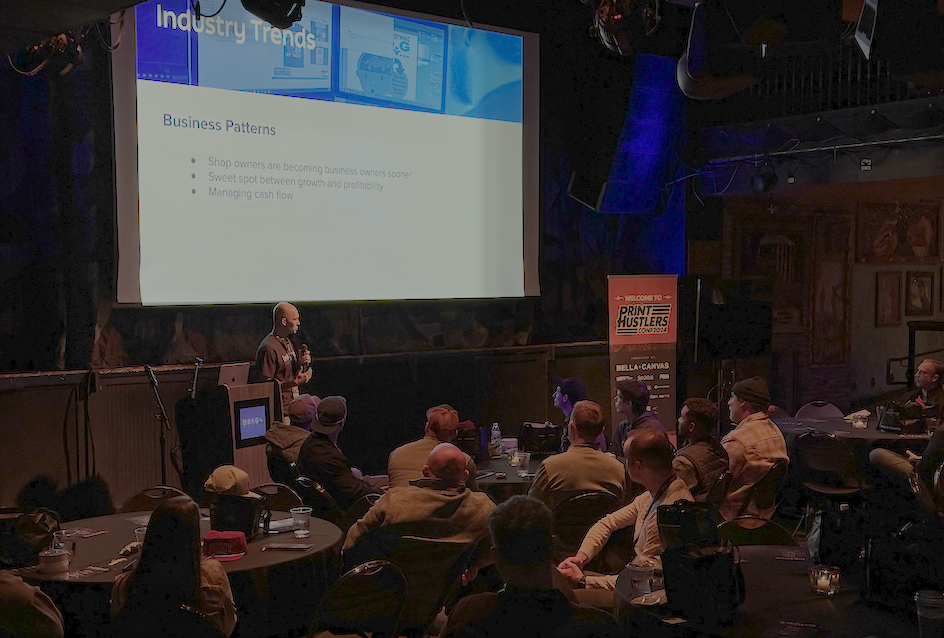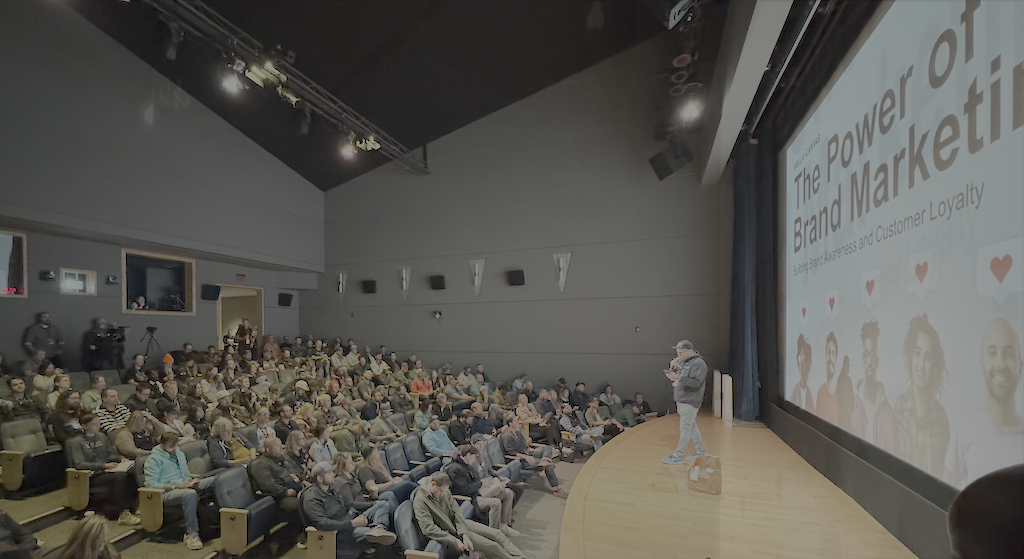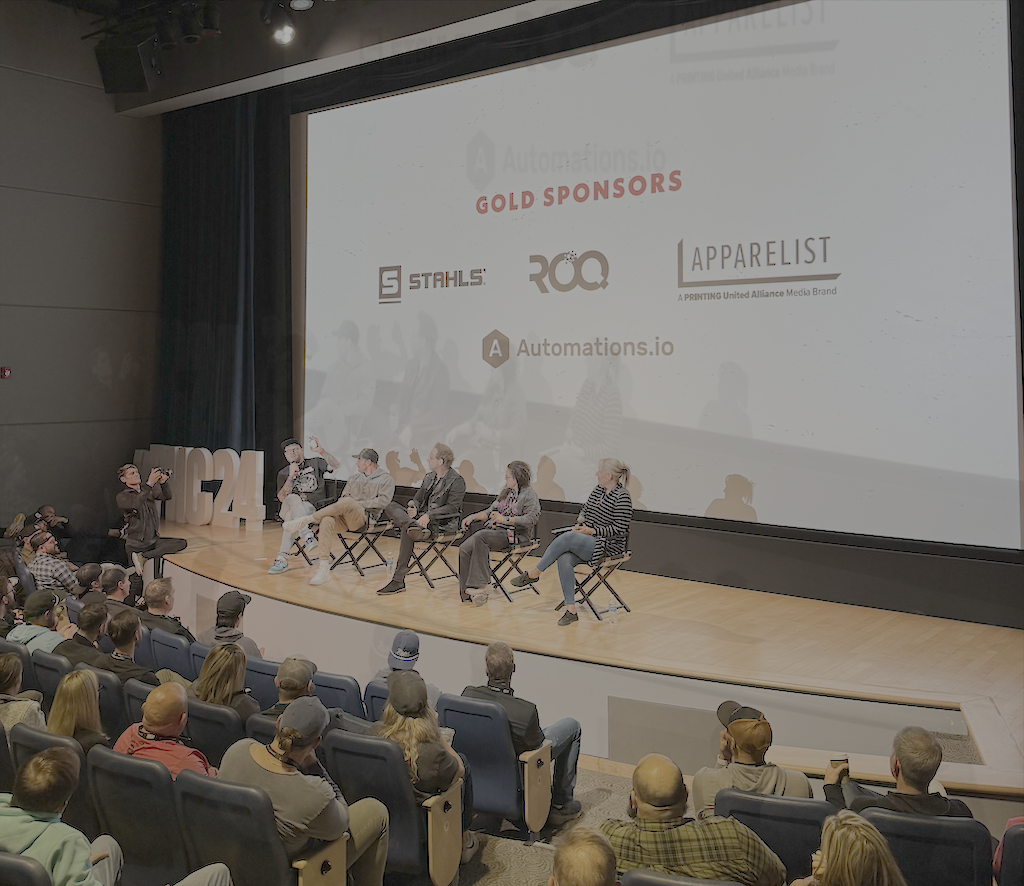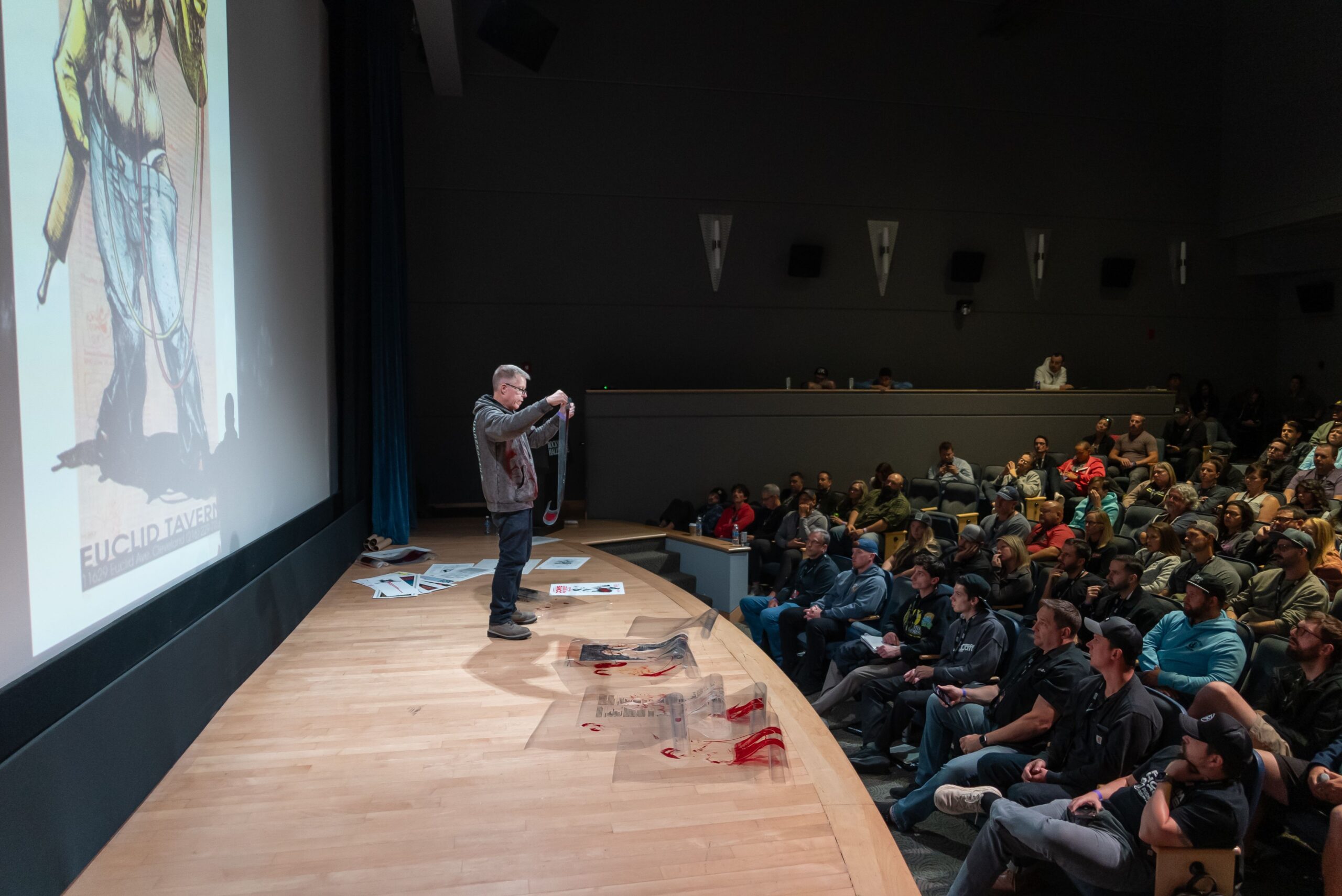With another successful Print Hustlers Conference in the bag, we thought we’d take a second to recap our experiences at the event. Printers, educators, and industry professionals converged on Cleveland at the Rock and Roll Hall of Fame for three days this year.
The exciting schedule included an Inktavo users summit and a wide swath of presentations on everything from economics and profit growth to automations and team-building strategies.
Here’s a collection of thoughts from James Armijo, CEO of Inktavo, and Bruce Ackerman, Founder and General Manager of Printavo. We hope to see you again next year at Print Hustlers Conference!
James Armijo – What We’ve Seen in 2024
DTF is Changing The Game
There’s been a shift in business patterns in our industry, and we’re seeing shop owners become business owners sooner.
This is happening because of a shift in the availability of equipment. Traditionally, shop owners started with something like a manual press, which limited their ability to produce jobs economically. Eventually, they would upgrade to an automatic press or expand their facility.
With the introduction of Direct-to-Film (DTF) equipment, that equipment is more affordable and allows the producer to offer more types of services to their customers.
With DTF, printers can produce one-off customized garments for an e-retailer in a way they wouldn’t have been able to with a manual press.
I think this trend means a lot more new entrants into our marketplace with more niche focuses.

Managing Profitability
There’s been a return to focusing on profitability, probably with a bit less growth. Businesses are focusing more on existing customers, identifying which ones have the highest contribution margin, and assessing whether they need to raise prices.
A client might walk away from the shop with raised prices, but as a result, that business is still making money overall.
Managing Cash Flow
With increased interest rates, the cost of capital has gone up, so managing cash flow has become more prevalent. Whether that cash flow is a revolving line of credit from a bank, a credit card, or even an embedded lending product like Printavo Capital, powered by Parafin (which is tied to embedded payments in Printavo), all of those are options now, but it’s become more important to manage cash flow with high interest rates.
On the other hand, our customers are feeling the same pressure from their customers since they also have cash flow demands. They’re asking print shops for things like longer payment terms on invoices or smaller upfront deposits on orders.
So, what we’re finding is many of our customers are trying to find the balance between the right financing option and goals of profitability around increasing demands from your customers
E-Commerce
The general theme of e-commerce is allowing customers to buy in ways that reduce friction. In the past, it was completely acceptable for customers to call the shop to initiate an order, have the shop owner send back a PDF quote, and eventually pay by check through the mail.
I suspect that because of Amazon and other e-commerce platforms that gained substantial adoption, particularly during COVID-19, our customers’ customers now expect a better option. They want to do reorders online without having to talk to someone, and they want features like corporate online stores.
We’re also noticing that our customers are running online stores and have their own set of shoppers who are making the purchases. This dynamic means an Inktavo customer is running a site for their customer, and that customer is end-selling goods to their shoppers.
This setup is usually most common with markets like high-school booster clubs or parent groups. In that scenario, having a platform that gives you the e-commerce experience people are familiar with from places like Amazon is absolutely critical for print shops that want to differentiate themselves from businesses still using paper order forms.
Fast Turnaround Printing
Fast turnaround time on printing is not exclusively but very much intertwined with DTF and print-on-demand (POD).
This trend revolves around the concept of producing low-volume orders quickly.
We’re seeing a couple of reasons why this demand for fast turnaround continues to grow:
- Reduced costs: Since the cost of an individual DTF-printed garment has come down, printers can use it to fulfill more volume than they have in the past. This is especially true when you think about DTF replacing DTG since DTG is so reliant on a high total number of small volume orders.
DTG printers have to run continuously to meet those order volumes, and they’re quite expensive to maintain. DTF, meanwhile, can run asynchronously, and they’re relatively affordable compared to DTG printers. Because of that, you have a tool kit that can produce many more types of garments. - Increase in Customization: On the demand side, there’s been an emergence of increasingly customized apparel in smaller quantities. If you think of a concert 10 years ago, you’d buy the merch at the show, and that was it. Incremental to that are other items, like customized T-shirts people wear to the concert and need them printed quickly beforehand. The higher-volume screen printing orders still exist and continue to sustain, but we’re seeing incremental growth on the short-turn, highly customized side.
The Impact of Artificial Intelligence
AI undoubtedly gets a lot of news coverage, but it’s still unclear how it’s truly impacting our industry. My opinion is that it’s not going to be sci-fi-like implementations, or it’ll somehow run your printing press. Instead, I see tactical, behind-the-scenes automations.
AI will help shop owners determine the most repetitive tasks in their workflow and configure AI to cover some of those tasks. That sort of automation will improve a team’s productivity since they’ll be freed up to do more, which ties back into profitability and cash flow.
By improving productivity and reducing repetitive tasks, you can achieve more throughput against the same fixed cost base and, therefore, be more profitable. I also see AI being used to handle things like comparing prices across multiple suppliers, which also saves shop owners time and contributes to overall profitability.
We’re excited to be at the forefront of these innovations, but we also realize that we’re still very, very early and AI’s impact will probably be relatively small on our industry in the foreseeable future.
Bruce Ackerman – A Recap of Print Hustlers Conference Presentations
I always love getting back together with so many shops. We quickly get into our own bubbles and need a chance to pop out more, and that’s why I love going to the Print Hustlers Conference.
First off, props to MadeLab for hosting this event. The amount of work it takes to help ~200 shop owners have a good time and learn from each other is immense.
Here’s a summary of some highlights:
Inktavo updates: Printavo statements is live, and receiving is in progress! I’m excited to see significant momentum from the product team. It was nice to share what’s going on behind the scenes and convey best practices for online stores.
Brand marketing: We learned that established credibility drives sales. If you give people a reason to believe in a brand, they will buy.
You can do this by building an authentic and real audience, but if you just chase dollars, your brand/marketing strategy will be all over the place. Constantly show up with your brand to reap long-term benefits.

Automations IO: This incredible new platform that builds automations for you. This means less time figuring out programs like Zapier or dealing with breakages.
Automations help with repetitive tasks in four departments: operations, sales, marketing, and finance. I’m excited to see them continue to help owners remove themselves from the day-to-day.
Promotional Products: Most shops sell promotional products, but can you drive a higher AOV (average order value) with nicer-quality promotional products? One example shared was adding office and home accessories to retail brands.
An Economic Analysis: This was an exciting talk filled with data about our industry and the broader economy. We fight misinformation on all sites with dramatized headlines to capture more eyeballs daily.
Through shared data, we learned that the U.S. economy is in a strong state with a growing ~$27T GDP. Inflation will remain in the 3-4% range, which drives the need to reevaluate your prices every 6-12 months.
One best practice we learned was to operate your company as if you wanted to sell it. Continue holding cash, as borrowing costs are still high, and focus on employee retention.
Built to Scale: We hear a lot about scaling in our industry, so this conversation was helpful. Your goal as an owner is to generate enough cash to cover living expenses and not have to be present in your business 70 hours a week. But how do you execute on the latter?
Through trust, delegation, and context, you can achieve this goal. Some questions we were asked to contemplate on this include things like:
- Can you build credibility with your team and make sure motivations are clear and aligned?
- Do you believe your staff is reliable enough to handle the tasks you want them to achieve?
One way of building that trust is through weekly shares, where you share one professional and one personal thought.
You’ll create clear, constant communication about priorities and processes while delegating critical thinking. If you delegate just the task, you’ll always be part of the process.
Supacolor: Their scale is insane. It’s hard to understand how many transfers they produce now, but the amount of R&D happening is at the next level. I’m excited to see where they go.
Derek Hess: This guy is an artistic genius. It is unbelievable that he can create separations by hand on film. Give him an Instagram follow.

Curious where you can find Printavo and the rest of the Inktavo family at in-person events like tradeshows and the Print Hustlers Conference? Check out our events page.


0 Comments